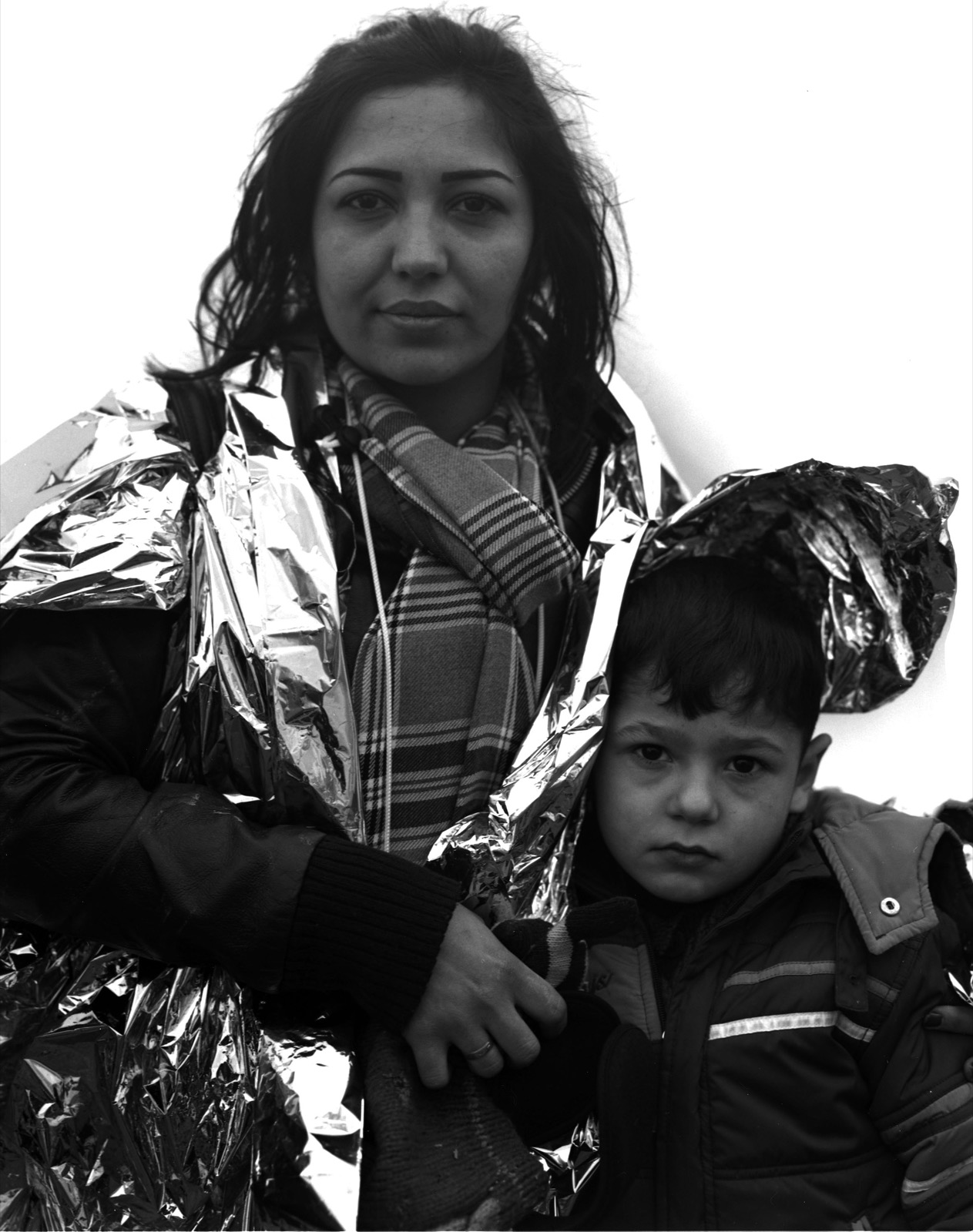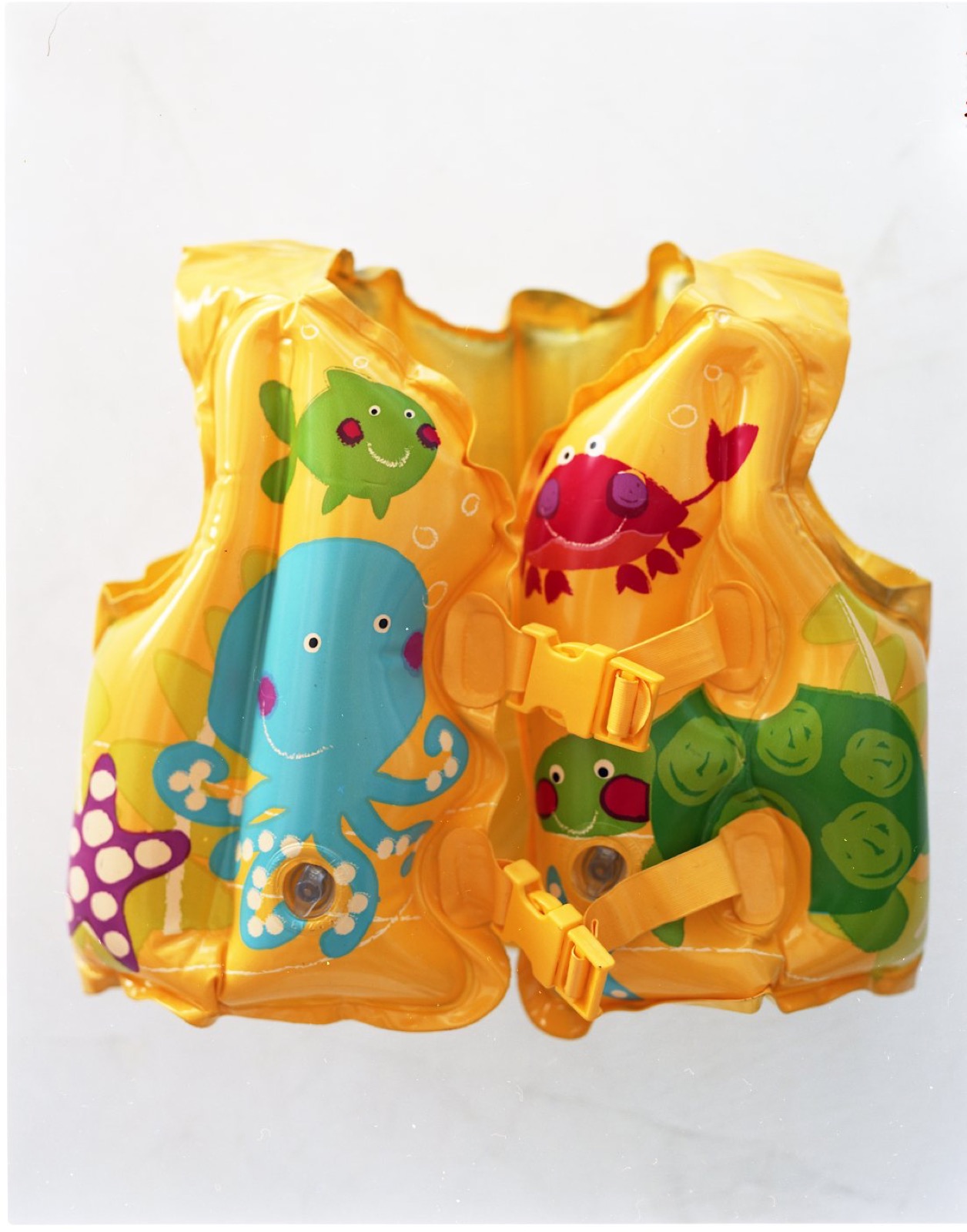Light on the Sea
Light on the Sea is the dramatic story of the refugee crisis told through the perspective of volunteers on the front lines helping them find safety, and the refugees they encounter who have risked their lives crossing the Aegean to get to Europe, a journey they call in Arabic, rihlat al moot, “The Route of Death.”
Click here for the article, portrait series, and short film on Vanity Fair.

An Afghan refugee wrapped in a thermal blanket as he arrives on the shores of Lesbos in freezing conditions. January 22, 2016.

Eugenio Mantero Bueno, firefighter from Seville, Spain, in a wet suit. He was one of many volunteers helping refugees as they landed on Lesbos.

Birifan Osman and her son from Syria as they arrive on the island of Lesbos, Greece.

Hazem Ayoub from Homs, Syria, with his WhatsApp account and a pin showing where he was during his crossing of the Aegean Sea from Turkey to the island of Lesbos.

A child’s life vest worn during a crossing of the Aegean Sea from Turkey to Greece, left behind on a beach in Lesbos.

Neda Kadri from Dearborn, Michigan. Neda was an activist for the Syrian revolution, and has been working in Lesbos as a volunteer, helping on the shore and pulling in boats, since December 2015. She calls the crossing “the curse of the bittersweet,” because as refugees are traveling to Greece in search of asylum and safety, many are dying along the way.

Zeko Alolabi from Damascus, Syria, in Lesbos, Greece. Zeko tried three times to make the dangerous crossing. The first two times he was stopped by the Turkish Coast Guard. During one attempt, the Turkish Coast Guard punctured the rubber dinghy he was in, and he had to swim back to shore. After arriving, he stayed on in Lesbos for several months to help other refugees.

Galat Warsame from Somalia who arrived in Lesbos, Greece, after making the dangerous sea crossing from Turkey in search of asylum in Europe.

Rafat al-Hamoud from Damascus, Syria. Two years ago, Rafat traveled from Syria to Lebanon then Algeria to Tunisia to Libya, spending two and a half days on the sea, before arriving in Italy, then on to France, Holland, German, and finally Denmark. Members of his family drowned on October 29, 2015, while traveling by boat to Greece. He traveled to Lesbos to bury his cousin, and has been volunteering since then helping refugees and migrants who land on the shores and helping boats in distress on the water.

Karin Den Iseger from Utrecht, Netherlands, a volunteer working with the Dutch aid organizations Because We Carry and Lesvos Winterproof. She works at the Amsterdam Arena as an event manager and came to Lesbos for several weeks where she worked preparing and handing out food near the Moria registration center.

Nadia and her daughter Cassandane, from Herat, Afghanistan. Nadia was married at the age of 10 to an abusive husband. She fled Afghanistan and hopes to start a new life in Europe studying film and helping improve the situation of women in Afghanistan, particularly in stopping child marriage.

Mohammed Hossein Qalandari, known as “Elvis,” worked as a translator with American forces in Kandahar, Afghanistan, in 2010. Facing threats from the Taliban for his work, he applied for asylum in the U.S., but his application was denied. He traveled from Afghanistan, through Iran to Turkey, then by boat to Greece, and on to Germany, where he is applying for asylum. “The U.S. threw me away like trash,” he said, as he was helping other refugees outside the Moria transit center.

Manuel Blanco, a firefighter from Seville, Spain, and a volunteer lifeguard on Lesbos, Greece, in charge of a team of firefighters from the Spanish N.G.O. Proem-Aid. Manuel, two other Spanish firefighters, and two Danish volunteers with the N.G.O. Team Humanity were arrested on the Greek island of Lesbos on January 14, 2016, and charged with human trafficking when they went to help a refugee boat that was thought to be sinking. They were released on January 17, 2016, with a 15,000-euro fine.

Fiona McDaid, from Cambridge, England, holding a handmade doll she knitted for refugee children. She came to Lesbos, Greece, to volunteer.

A refugee arrives on the beach in Lesbos, Greece.

Spyros Galinos, mayor of Lesbos, who wants to see a safe passage for refugees. “The lack of European international policy for this refugee crisis forces the refugees to choose this way, and forces them to collaborate with illegal smuggling networks in order to cross the Aegean Sea in such dangerous conditions.”

Nigel the Octopus, one of the toys knitted by Fiona McDaid for refugees and migrants.

Amin Aslam from Lahore, Pakistan, at the U.N.C.H.R. transit center at Moria. Refugees and migrants from countries such as Pakistan are sent to Athens, where they can apply for asylum, but will likely be deported.

Philipp Groezinger, from Germany, volunteer captain of the European Sea Watch rescue boat that operates on the northern shores of Lesbos, Greece. He decided to head to Lesbos after seeing the photo of Aylan Kurdi’s body on the beach, a three-year-old Syrian refugee who drowned while his family was making the dangerous crossing from Turkey to Greece. As a sea captain, he said it wasn’t enough to drive rich people around the world in yachts, but instead he wanted to use his skills to help the thousands of people risking their lives on the sea to make it to Europe.

Giorgia Linardi, mission coordinator for Sea Watch, a European N.G.O. that helps provide safe passage on the sea for refugees and migrants trying to reach Europe. She is holding a two-way radio to communicate with Frontex, the Coast Guard, and other rescue boats to help refugees at sea.

A life vest worn during a crossing of the Aegean Sea from Turkey to Greece, left behind on a beach in Lesbos.





















Photographer: Micah Garen
Producer: Marie-Hélène Carleton
